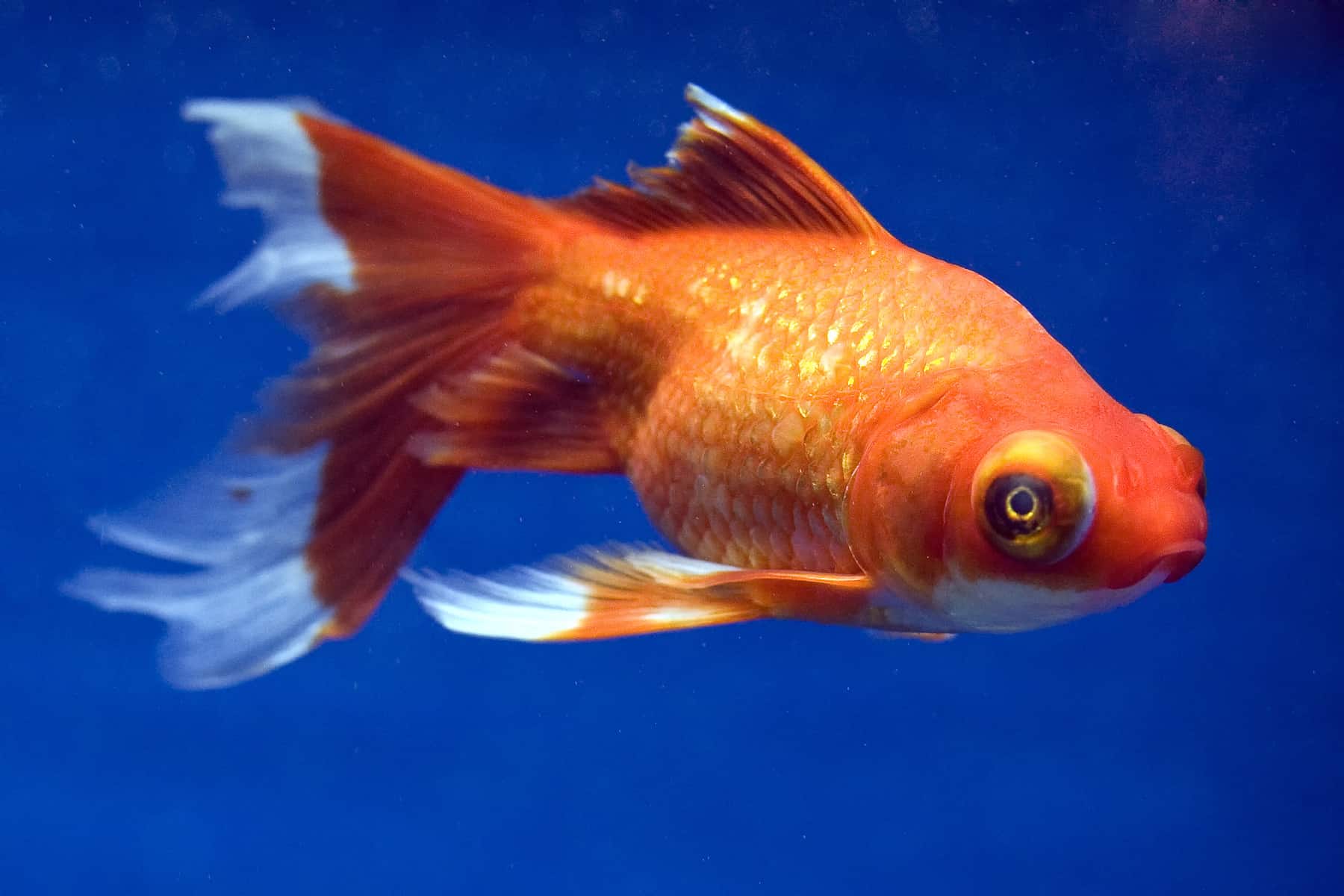

Telescope Goldfish reach smaller sizes than many other kinds. Yet, some Telescope Goldfish have lived past 20 years of age when kept in prime conditions. On average, they will live for 10-15 years. When kept in proper conditions, Telescope Goldfish can live for a long time. Juvenile fish are darker in color for better camouflage. Although they may come in solids, they often come in a variety of two or three colors. They come in a variety of colors from red, blue, brown, and white. These fish are very colorful, making them a favorite addition to aquariums. Yet, you can sometimes find them with veil tails, broadtail, or butterfly tails that are longer. Most of these fish have a medium-length, split tail fin.

The male will appear more streamlined and less stocky. You can tell females and males apart because the female is larger and rounder than the male. They have short, egg-shaped bodies with wide heads.

Yet, they are smaller in size and have larger eyes. Telescope Goldfish look quite like Fantail Goldfish. As adults, some of these fish will have eyes that protrude as much as ¾ in (19 mm) from their heads. You won’t begin to notice the protrusion of their eyes until they’re about 6 months old. Their overly large eyes sit on top of long stalks at the sides of their head. We call them “Telescope Goldfish” because their eyes look like a telescope. We know these goldfish for their distinctive, bizarre-looking eyes. They are sometimes found in other areas as an invasive species. Wild Telescope Goldfish are still found in Asian waters today. In the wild, these fish inhabit stagnant, slow-moving water. The Japanese began developing these fish later in the 1700s and gave them the name “Demekin”. It was the Chinese who gave them the name “Dragon Eye Goldfish”. The Chinese created the Telescope Goldfish through the breeding of Tosakins and Ryukin Goldfish. These big eyed fancy goldfish were first developed in China in the early 1700s.

Where Are Telescope Goldfish Found In The Wild? Still, they make interesting, peaceful additions to many aquariums. They don’t do as well in the wild where they’re easily outcompeted for food. They leave Telescope Goldfish with poor eyesight. Unfortunately, the big eyes actually act as a hindrance. Humans have selectively bred these fish for their colors and body shape. The thing that makes these fish interesting is that their big eyes serve no purpose. They are the most recognizable kind of goldfish because of their huge, bulging eyes. They are sometimes referred to as Demekin, Dragon Eye Goldfish, or Globe Eye Goldfish. Telescope Goldfish belong to the family Cyprinidae. Have you ever seen goldfish with big eyes and wondered why their eyes are so large? Why do their eyes look so odd? What is the benefit of having these big eyes? Why don’t all goldfish have them?Īre you curious about these large-eyed fancy goldfish, or do you want to add one to your aquarium? Either way, you’ll find out everything you need to know about them here.


 0 kommentar(er)
0 kommentar(er)
